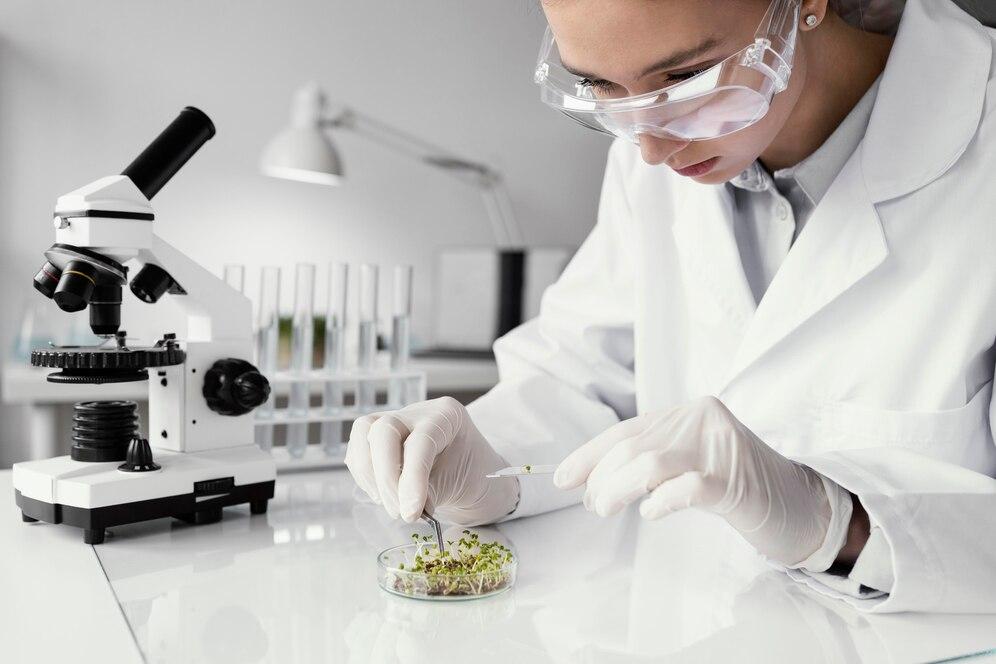Protein purification is a critical process in biochemistry and biotechnology, essential for isolating and studying proteins of interest. Among the various techniques available, magnetic beads and column chromatography are two commonly used methods provided by lytic solutions. Magnetic beads offer the advantage of rapid and efficient purification, while column chromatography provides high resolution separation based on specific interactions. This article explores the principles, applications, advantages, and limitations of both techniques, aiming to provide a comprehensive comparison to guide researchers in making informed decisions for their protein purification strategies.
Overview of Protein Purification
Protein purification is like dating for scientists - separating the proteins you want from the ones you don't. It's all about finding that special protein and making sure it's free from any unwanted companions. There are various techniques out there, but two popular methods are using magnetic beads and column chromatography. Let's dive into these techniques and see which one's the dream date for your protein research.
Magnetic Beads: Principles and Applications in Protein Purification
Magnetic beads are like tiny protein magnets that can attract and bind specific proteins from a complex mixture. By applying a magnetic field, you can easily separate the beads with your target protein attached, making purification a breeze.
Applications in Protein Purification
With their versatility and ease of use, magnetic beads have become a go-to method for purifying proteins in research labs worldwide. They're like the swiss army knife of protein purification - quick, efficient, and reliable.
Column Chromatography: Overview and Methodology
Column chromatography is like a protein purification spa - proteins check in, impurities check out. It works on the principle of separating proteins based on their size, charge, or affinity for certain molecules, giving you a purified protein at the end of the process.
Methodology for Protein Purification
Column chromatography involves passing your protein mixture through a column filled with a stationary phase. As the proteins travel through the column, they interact differently with the stationary phase, allowing for separation based on specific characteristics.
Comparison of Magnetic Beads and Column Chromatography in Protein Purification
When it comes to efficiency, magnetic beads take the crown. They offer rapid purification with minimal manual intervention, making them a favorite for quick protein isolations.
Purity Comparison
In terms of purity, both magnetic beads and column chromatography can deliver highly purified proteins. However, column chromatography may provide slightly higher purity levels due to its ability to fine-tune purification conditions.
So, whether you choose magnetic beads for speed or column chromatography for precision, both methods have their strengths in the quest for pure proteins. Just remember, in the world of protein purification, sometimes you need a little bit of speed, a dash of precision, and a whole lot of science mojo to get the job done right.
Advantages and Limitations of Protein Purification with Magnetic Beads
Using magnetic beads for protein purification offers a quicker and more efficient process compared to traditional methods. They allow for easy manipulation and separation of proteins, resulting in higher yields. Additionally, magnetic bead purification can be easily automated, saving time and labor.
Limitations
One limitation of magnetic bead purification is the potential for nonspecific binding, leading to contamination of the Protein A Magnetic Bead may also be more costly upfront compared to column chromatography, and they may not be suitable for large-scale purification processes.
Advantages and Limitations of Protein Purification with Column Chromatography
Column chromatography provides high resolution and purity of proteins, making it ideal for complex samples. It allows for fine-tuning of purification conditions and can handle large sample volumes effectively. Column chromatography is also a well-established technique with a wide range of available resins for different purification needs.
Limitations
One limitation of column chromatography is the time-consuming nature of the process, especially for large-scale purifications. It may also require specialized equipment and expertise to optimize purification conditions. Cost can be a consideration, especially for recurring use.
Considerations for Choosing Between Magnetic Beads and Column Chromatography
When considering cost, Magnetic Beads Protein Purification may have higher upfront expenses, but it can save time and labor in the long run. Column chromatography, although potentially cheaper initially, may require more resources for optimization and maintenance.
Sample Size Consideration
For small-scale purifications or quick separations, magnetic beads are advantageous due to their ease of use and automation capabilities. Column chromatography is better suited for large-scale purifications that require high purity and resolution.
Conclusion: Making Informed Decisions for Protein Purification Strategy
When choosing between magnetic beads and column chromatography for protein purification, it is essential to consider factors such as time, cost, sample size, and desired purity levels. Both methods have their advantages and limitations, so selecting the most suitable technique depends on the specific requirements of the purification process. By weighing these considerations carefully, researchers can make informed decisions to optimize their protein purification strategies.
In conclusion, the choice between protein purification with magnetic beads and column chromatography offered by lytic solutions ultimately depends on the specific needs and goals of the research project. Understanding the principles, advantages, and limitations of each method is crucial in selecting the most suitable approach for achieving desired purification outcomes. By weighing factors such as efficiency, cost, and sample size considerations, researchers can make informed decisions to optimize their protein purification strategies and advance their scientific endeavours.
Original Source: https://lyticsolutions.blogspot.com/2024/08/protein-purification-with-magnetic.html

